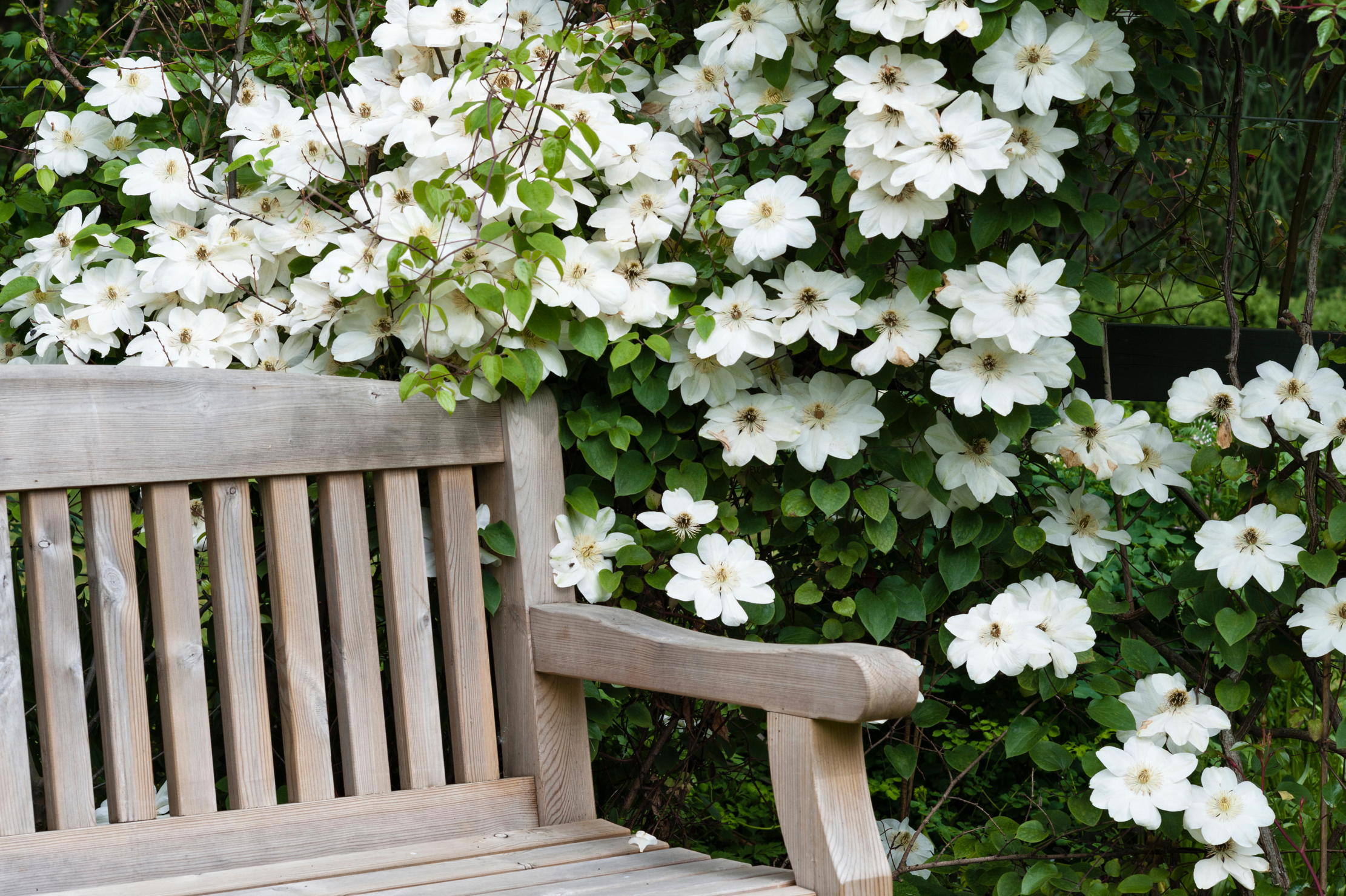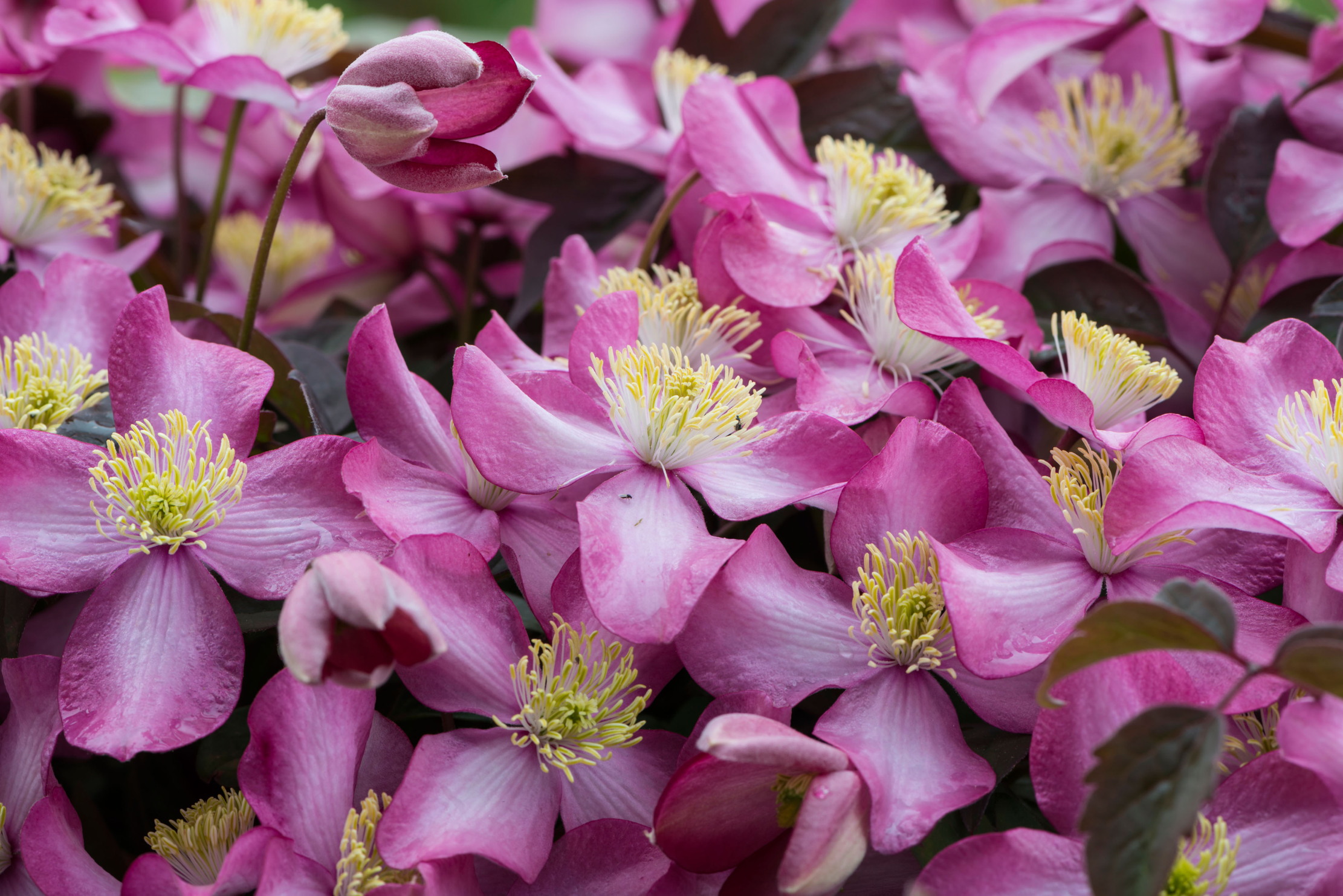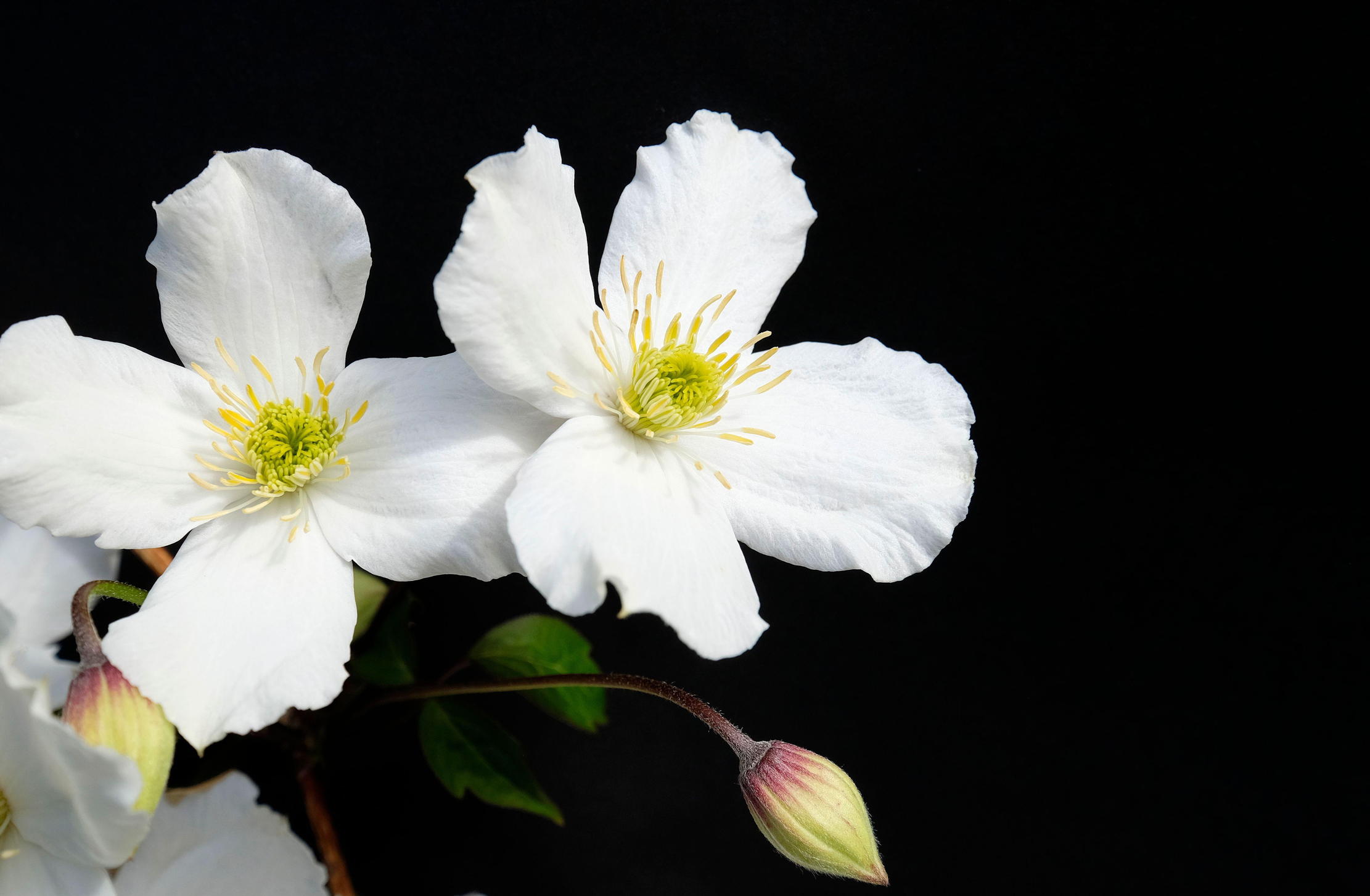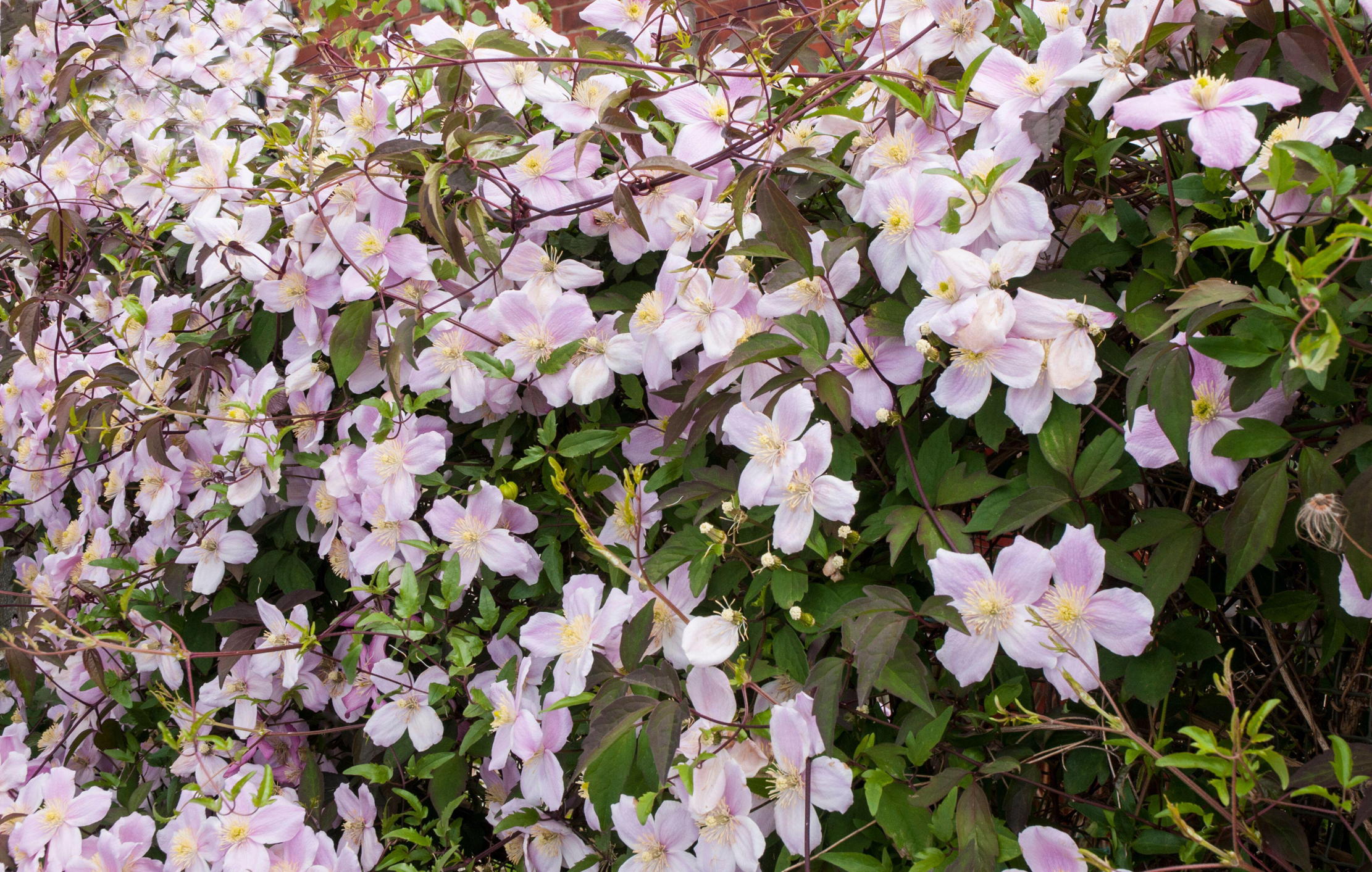Six of the best Clematis montanas that every garden needs
Clematis montana is easy to grow and look after, and is considered by some to be 'the most graceful and floriferous of all'.


Clematis is one of the most useful and widely grown garden plants. Botanists tell us that there are about 300 Clematis species — some say the true number is nearer to 400 — and that’s before you start counting the many ornamental hybrids that add so much beauty and versatility to our gardens. The RHS Plant Finder divides the genus into 15 distinct groups and lists more than 800 species and hybrids, which is a measure not only of their diversity, but also of their popularity.
Clematis is a member of the Ranunculaceae family, which means that the plants have no petals because the four sepals do duty for them. The Montana Group is one of the best known — some garden-lovers consider it the most graceful and floriferous of all.
All its members descend from a Chinese or Himalayan species called Clematis montana, which was discovered by Francis Buchanan in Nepal in 1802 and first flowered in London after his return to England in 1805. The typical C. montana that grows in the wild is variable in height, usually reaching 20ft, although there are several immensely vigorous forms, capable of clambering up trees and over rocks to 40ft.
They cannot match the summer-flowering clematis for flower-size, nor the Viticella cultivars for elegance and diversity of colour, but the Montanas flower in clusters all along last year’s growths, so that their stems are usually wreathed in pink and white garlands many feet long. They are rampant ‘good do-ers’ — most large gardens have at least one or two kinds, apparently thriving on neglect.
We've picked six of our favourites, so go get planting.

Clematis montana ‘Freda’. Pretty in pink.
Clematis montana ‘Freda’
Given the RHS Award of Garden Merit (AGM). One of the first into bloom and lightly scented, with rich pink single flowers and paler middles to the sepals. Attractive dark foliage and handsome yellow anthers. Not too vigorous, easily kept to 10ft–12ft.
Exquisite houses, the beauty of Nature, and how to get the most from your life, straight to your inbox.
Clematis montana ‘Broughton Star’ AGM
By far the best double-flowered Montana, with clusters of flowers, red-purple at the centre and pink around the outside, abundantly borne. Moderately vigorous (15ft–18ft) and perfect on pergolas or trailing through suitable trees.

Clematis montana ‘Prosperity’. Good in mid season.
Clematis montana ‘Prosperity’
A fine mid-season form with a mass of long-stemmed, bright, white flowers, plus a few in late summer and autumn. A good choice for rambling over banks and up into hedges. Up to 20ft in height or spread.
Clematis montana var. wilsonii
Late flowering with creamy-white flowers, remarkable for their strong scent of chocolate and their long, wispy stamens. Usually 15ft–20ft in height.

Clematis montana var. rubens ‘Tetrarose’. The best of the 'pink-flowered forms'.
Clematis montana var. rubens ‘Tetrarose’ AGM
Generally thought the best of the pink-flowered forms, partly for its multitude of vanilla-scented flowers and partly for its vigorous growth up to 20ft.
Clematis montana var. grandiflora AGM
A wonderful out-size form for large spaces: the flowers are 3in–3½in in diameter, pure white and abundantly produced. The plant will grow to 30ft, even 40ft, and looks spectacular clambering up an evergreen tree, such as a cypress.
Charles Quest-Ritson is a historian and writer about plants and gardens. His books include The English Garden: A Social History; Gardens of Europe; and Ninfa: The Most Romantic Garden in the World. He is a great enthusiast for roses — he wrote the RHS Encyclopedia of Roses jointly with his wife Brigid and spent five years writing his definitive Climbing Roses of the World (descriptions of 1,6oo varieties!). Food is another passion: he was the first Englishman to qualify as an olive oil taster in accordance with EU norms. He has lectured in five languages and in all six continents except Antarctica, where he missed his chance when his son-in-law was Governor of the Falkland Islands.
